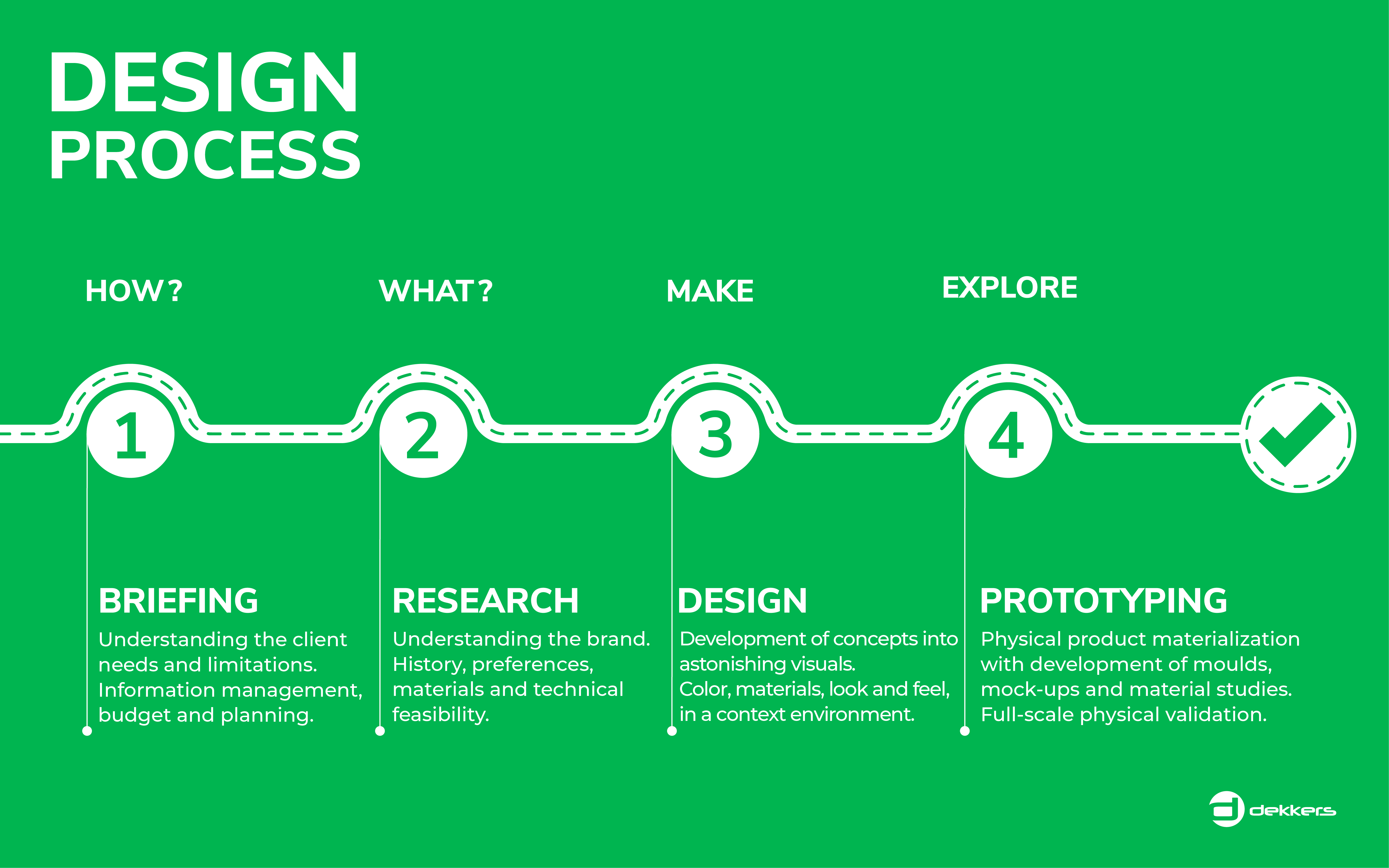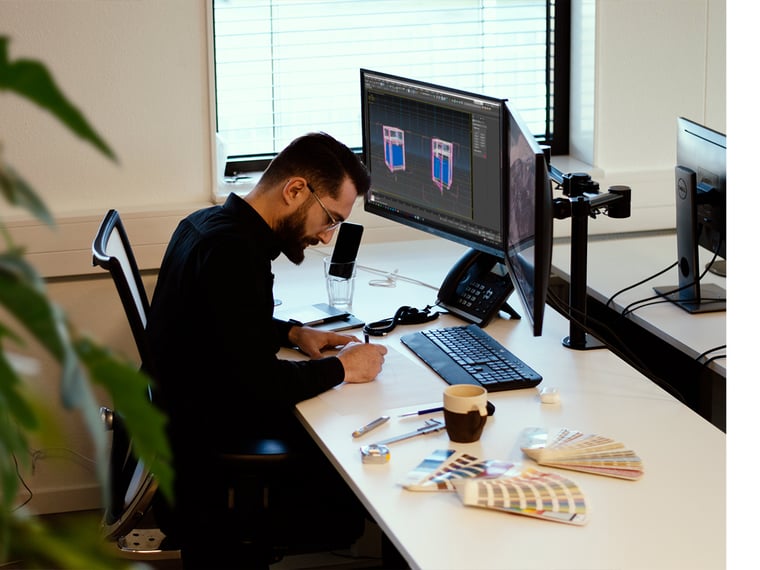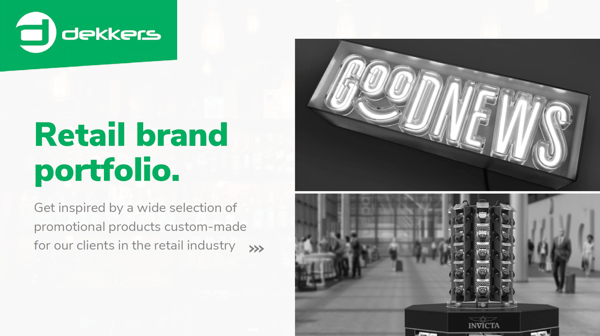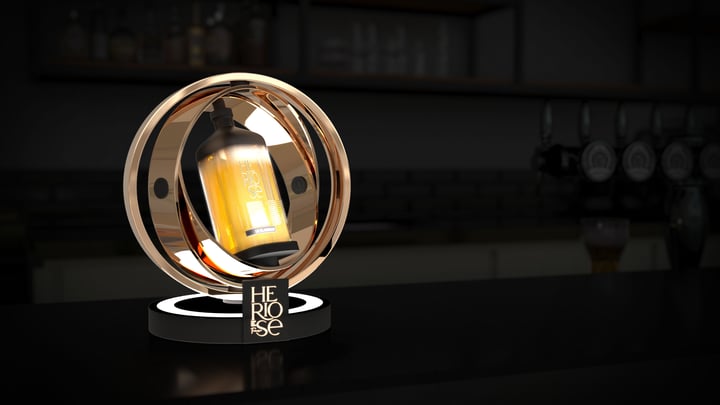As a marketer, your primary goal is to create items that drive impactful brand experiences. This strategic journey ensures that your marketing materials are not just visual, but stand out and leave a lasting impression. But how do you get there? And how can creative designers help?
From Brief to Brilliance: Navigating the Design Process
The design process begins with a brief, which can vary in detail. The key is to understand the essence of the brand. The design team conducts a meeting with the clients to touch on the dos and don'ts. Subsequently, the designer delves into the brand's history, preferences and materials, creating a virtual connection with the identity. This is part of the research phase and a key element of the creative design process.
Next, they do more sketching, to visualize proportions and get a feel of the overall look. The design is then refined and visualized in 3D. The result: realistic visualizations that closely reflect the final product.
This is followed by the prototyping phase. Prototyping involves creating physical versions of the product using different materials, such as molds, mock-ups and samples. These prototypes are made to test the design and functionality of the product in real life, helping to ensure that it works as intended before moving to mass production.
Here time remains a challenge. Rapid ideation and execution become a balancing act, especially when seeking innovative designs on tight timelines. It's a delicate dance between time and creativity, so it may be a good idea to involve your design partner as early as possible and provide a clear brief to optimize the design process. That way, there's plenty of time for creativity, brainstorming and sketching. Ensuring the results blow you away every time!
Designing Success through Clear Guidelines
Clear guidelines empower design teams, enabling them to create optimal product designs. These guidelines ensure alignment with the brand identity. They help understand client objectives and facilitate efficient decision-making.
Moreover, clients are encouraged to communicate their preferences and dislikes from the beginning of the design process. It's worth noting that expressing what is not desirable can be just as beneficial.
The importance of a detailed brief cannot be overstated. It acts as a guiding compass, providing a clear understanding of the client's vision. This, in turn, allows the designer to easily develop proposals that align with the client's goals.
How Quality Materials Enhance Brand Experience
.jpeg?width=760&height=427&name=Licor%2043%20Bottle%20Glorifier-1920x1080%20ratio%20-%20Low%20resolution%20(1).jpeg)
Working with high quality materials is crucial when it comes to creating a positive long-lasting impression on customers. Quality materials not only ensure the safety of the product; they aid in enhancing consistency and brand experience. This helps convert your consumers into brand ambassadors by building trust, fostering loyalty and positive word-of-mouth.
Furthermore, it plays a crucial role in improving the effectiveness of marketing content. It acts as an investment, improving efficiency and cost saving. To put it simply, the use of premium materials is the key for improving brand image.
To read more about the importance of high-quality materials, click here.
Evolving Beyond Aesthetics
It is critical to keep redefining the creative process and future-proofing the approach. The design process should not just be about aesthetics, but more about becoming a strategic partner.
Design teams must not only follow the client's guidelines, but go a step further and create their own interpretation of what best captures the true essence of the brand. They should actively seek out areas to offer alternatives that best encapsulate the client's brand. This proactive approach improves brand visibility and overall design quality.
What's Next: Innovation, Digitalization and a Greener Future
In recent years there has been a shift towards all things digital. To stay ahead of competition and push boundaries, companies must embrace digitalization and keep up with trends. This proactive approach ensures sustainable growth, resilience and relevance in today's ever-changing business landscape.
Embracing the digital age and undergoing a comprehensive digitalization process is the key to staying competitive. This transformation usually encompasses the use of cutting-edge tools, technologies and design concepts. The result: products that are guaranteed to transform the trade marketing landscape.
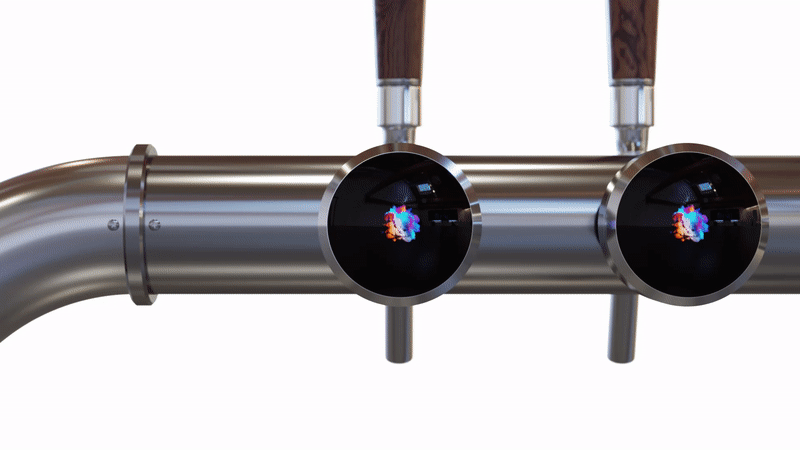
Imagine the power to tailor your marketing message and effortlessly engage potential customers. The Digital Tap Lens is so much more than merely a product; it is your brand’s gateway to offering consumers a dynamic and immersive brand experience.
The development of the Digital Tap Lens and the interconnected cloud environment will revolutionize the tech landscape. In the near future, the aim is to seamlessly integrate all digital components. This includes everything from digital tap lenses to screens and neon signs, creating a world where personalized information and control are at your fingertips.
As the Digital Tap Lens evolves within a cutting-edge cloud environment, every establishment hosting it will seamlessly integrate into this network. The Digital Tap Lens is on track to enter the market soon, experience for yourself what sets us apart!
To read more about the Digital Tap Lens, click here.
Conclusion
By involving the design team from the onset and updating brand guidelines regularly, a proper understanding of the brand's essence can be achieved, resulting in outcomes that elevate brand experiences. Build trust, strengthen brand loyalty and contribute to marketing success by using high-quality materials and cutting-edge technologies.
As we move towards a future that embraces innovation, digitalization and sustainability, clients are encouraged to join in the journey of redefining trade marketing success. Innovations like the Digital Tap Lens and the interconnected cloud environment demonstrates a commitment to staying at the forefront of industry trends.
Step-by-Step Design Process
